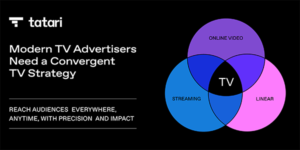“On TV & Video” is a column exploring opportunities and challenges in advanced TV and video.
Today’s column is written by Michele Madaris, media director at Boathouse.
TV is not dead, nor is it dying. It is in an evolutionary state. Gone are the days of the family gathering in the living room, huddled around the one TV in the household, to watch NBC’s primetime lineup. What we have now is a fragmented viewing experience across multiple devices (TV, desktop, mobile, tablet) and services (linear TV, OTT, CTV). And they’re all fighting for viewers’ attention.
The pandemic was a watershed moment. Stay-at-home orders changed media consumption behaviors across all channels. Nielsen reported that video viewership increased by 60% thanks to CTV. And 44% of households have cut the cord or have never had traditional cable or satellite services.
Choice in programming has grown, too. There are more than 817,000 unique program titles across US linear TV and streaming services, up from 646,000 in December 2019.
For this reason, there is no one-size-fits-all solution for advertisers to reach their target audience. Rather, it comes down to who your target viewers are, what content they crave and how they consume it. But between distrust in Nielsen’s approach to TV metrics and continued fragmentation in digital measurement on the CTV side, advertisers don’t have clear answers.
An audience-first approach to measurement
Despite the shifts and acceleration toward streaming platforms, linear television remains the best way to reach a mass audience. Late last year, Nielsen reported that 32% of total TV time was spent with TV connected devices, compared to 68% with traditional TV. While there has been an overall ratings decline in traditional TV viewing, consumers continue to gravitate toward it for news and sports programming. Streaming, meanwhile, is the go-to for original and episodic content. Clearly, there’s a hunger for both.
For CTV and linear to co-exist, there needs to be an evolution in measurement.
We are in the age of focusing on the audience first for developing marketing strategies. We’re figuring out how they are behaving, the desired outcome, then determining the right time, right place and right message for intercepting our audiences.
Shouldn’t we apply the same audience-first approach to measuring impact across linear and CTV?
Advertisers deserve a consistent measurement approach across platforms with one, equivalized currency for both. As these worlds coexist and move into the future, we need to lean into one currency that is consistent across both platforms so we can effectively measure and optimize for the consumer advertisers.
We want and expect granularity, immediacy, transparency and flexibility in the current climate. For linear and CTV to remain relevant and coexist, measurement needs to evolve, just like the TV product.
So is TV’s death exaggerated? Yes. Can TV and CTV coexist? Most definitely. My hope is that an audience-first measurement approach and common currency will be the solution for reinforcing that the two can, in fact, live happily ever after.


